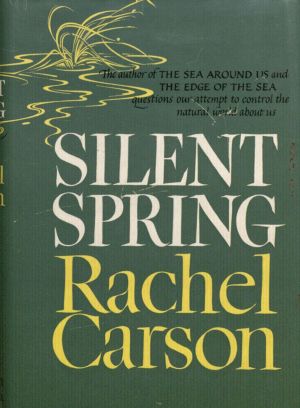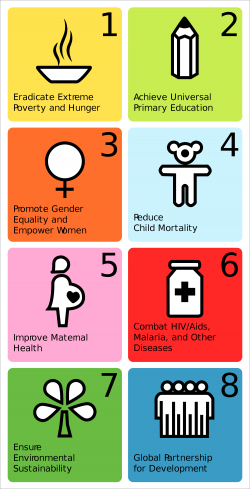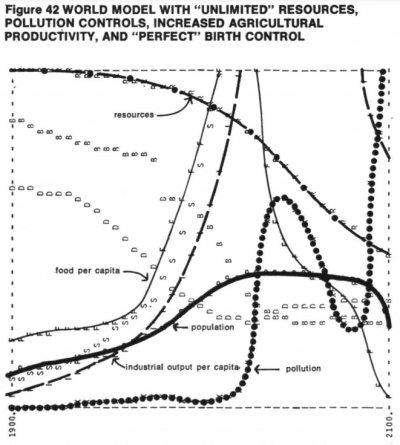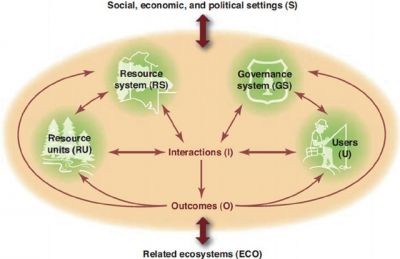History of Methods in Sustainability Science
Annotation: This entry focuses especially on Sustainability Science. For a more general overview, please refer to the entry on the History of Methods
Contents
The History of Methods in Sustainability Science

Originating in the long-term perspective of forest management, many cultures had recognized sustainability in its original meaning since a long time. With the rise of colonialism and the industrialisation, the impact of human societies onto the environment propelled into previously unseen dimensions, and the negative effects of pollution were an early indicator that modern factories and coal plants were not only drivers of economic growth, but equally harming livelihoods and the environment. First accounts of the environmental damage were localised, and Carson‘s "Silent Spring" is an early account of a systematic yet widely descriptive account of the negative impact that human activities had on the environment. This localised perspective was quickly altered onto a global scale through the Club of Rome. Their discourse around Climate Change was a first step from a problem-orientated perspective (Reports 1-3) to a solution-oriented perspective. The Millennium Ecosystem Assessments were equally hinting at the shift from describing the system towards a more transformative agenda by the follow-up institution IBPES. These global reports also outlined a pronounced shift in the focus towards a regional agenda, while the scientific landscape of Sustainability Science increasingly explored case studies. While these were increasingly rooted in the recognition and description of local aspects of a crisis, more and more studies implemented a solution-oriented agenda, indicating yet another shift in the mode of Sustainability Science. This frontier was most deeply explored by the transdiscplinary approaches developed over the last decades, which illustrated the importance of joined problem framing of science together with society, and the opportunities that arise out of such a mutual learning approach. All in all, Sustainability Science has shifted repeatedly in terms its underlying paradigms in order to arrive at its current agenda, and is - following Kuhn - truly emerging out of the recognition of a crisis. This article provides a brief overview on the developments that contribute to the methodological approaches that are prominent within the wide arena of Sustainability Science today. Since this arena is emerging, this overview cannot be conclusive, and is certainly not comprehensive.
The Revolutionary Start
The first or at least earliest relevant recognition of the global scale and the combination with inequality came from Karl Marx. While Marx did not elaborate on a methodological approach, his work is a foundation that opened a new empirical dimension. Economic data gained prominence out of the global trade rooted in colonialism, with the Dutch double book-keeping serving as a initial basis for a rising amount of money and numbers. Maps and surveys led to a global spatial understanding, and an early combination of economic purpose and spatial mapping was deployed in forestry, which integrated a long term perspective with a resource focus. Another contribution that slowly emerged as a necessary reaction to the industrialisation was the observation of pollution. An early prominent example was the Great Smog of London, which killed thousands due to specific weather conditions that trapped the pollution over the city. The description of the consequences of pesticides for the environment was yet another important step, as it already integrated many diverse obervations of researchers into one coherent overview, combining the role of pesticides regarding environmental damage with a better understanding of the effects on human health. Such systematic observations were made possible by the rise of modern statistics in the early to mid-20th century, triggering systematic approaches in research that first contributed to such different fields as astronomy and agricultural studies, but quickly dispersed into other research fields as well. At the time of Carson‘s "Silent Spring", information on the environmental impact of human actions was rising, partly also due to the often catastrophic effects of the Green Revolution. These local observations were subsequently amended by the more global perspective of the Club of Rome and its report on "The Limits to Growth". Computer simulations played a central role to generate the main message of this book, highlighting an at this time highly innovative approach where modelling supported the critique on unlimited growth. With to the System Thinking approach behind the model, a new perspective - that is the interaction between the different problems addressed in the report - was taken into account in a complex model. The Club of Rome thus provided a first vital approach to address the problem of unknown futures through scientific methods. To this end, Scenario Planning provided another milestone, as it allowed to generate different perspectives about the future through strategic planning. These two methods - Computer Simulation and Scenario Planning - are defining breakthroughs in the methodological canon that takes a deeper focus on different futures.
A Change of Methods
While the recognition of systems and the global increased, there was equally a revolution happening on the methodological scale of the individual, since especially Psychology and Social Science started to look more deeply into the behaviour and attitudes of individuals. By trying to understand human behaviour on an individual level, severe societal debates were filed, and in the long run these would play a vital role in the unraveling of normative knowledge. Interviews and other methods to engage with the knowledge and perceptions of people were rapidly increasing, and diverse approaches enabled a broader understanding of the values, beliefs and goals of people. The feedback loops that this created with politics are prominent, and elections and political influence were whole new spheres of knowledge unlocked by these methodological approaches. Since the 1960s, science thus engaged more and more in normative knowledge of individuals, and cultural studies, Ethnography and Political Science contributed on a wider level. Observational studies and more diverse Ethnographic approaches grew equally in importance, and due to their long tradition, their application to the current problems was a logical next step. Investigating modern society thus became almost like a new perspective in itself. From a methodological perspective, many such approaches became highly creative, yet the harmonisation with the existing classical lines of thinking was and still is a methodological challenge. The field of studies focussing on indigenous people is an example of a stratum of knowledge that was started to get unlocked already a long time ago, yet novel developments showcase that there is still a lot of knowledge waiting to get unraveled.
Evolving to Connect
An equally normative dimension, however on a different part of the system, is the development of Ecology and Conservation Biology out of Biology. Ecology and the pattern-oriented understanding of Biology emerged during the 1960s and 1970s into the new discipline of Ecology, focussing - among other things - on the patterns and mechanism of the accelerating biodiversity loss. Methodologically, this research built strongly on statistical models, however on the basis of often extensive data. This was also often combined - or at least not independent of - local interests to protect biodiversity. This goal to protect local and regional parts of the environment led to the ripening of Conservation Biology, which grew at least since the 1980s into an own branch of science. What charaterizes this field is the strong interchange between science and practical applications, since the results were often directly fed into management of ecosystems. Conservation biology thus provides an early testimony of a shift from a problem focussed towards a solution-orientated agenda, yet this would only emerge later as a new paradigm within Sustainability Science as such. A similar shift can be described for a more resource-oriented, or even economic, perspective. Recognition of the life cycle of products become a new baseline, and economic assessment became not only more holistic, but also gained a more pronounced recognition of global supply chains, potential harm to the environment, an emphasis on labour conditions, and a longer-term perspective on the product at hand. The recognition of a more circular economy tilted the previous production paradigms, and novel paradigms such as the Cradle to Cradle concept offer a completely new line of thinking. Elinor Ostrom designed a shift away from the Tragedy of the Commons, and developed a framework that moved away from classical economical models when it came to resource management. From a methodological standpoint, this was a dramatic development, since it allowed for the integration of global responsibility with a system scaled analysis. By combining different parts of the system, a more holistic perspective was enabled, and this remarked the necessity to combine knowledge from different schools of thinking. This indirectly enabled other approaches such as the social-ecological system approach. Knowledge about ecosystem dynamics became more integrated with the emergence of the ecosystem service concept, which focuses on the benefits people perceive from nature. Conservation, ecosystem services research and system-based approaches are all prominent examples of areas of science that often build on spatial data and analysis. Satellites and the availability of data from spatial planning enabled interlinkages between scientific analysis and management. This also enabled perspectives that had previously been concealed to our observation, such as the spatial spread of the Ozone hole.
A Solution-Oriented Agenda
By putting the environmental concerns more strongly onto the political agenda, the report from the Brundtland commission was another vital stepping stone towards the field of Sustainability Science, and a broader recognition of the endangered environment. The IPCC provided an upscale by focusing on the global dynamics of climate change, building on complex models, and the development of potential future scenarios under different pathways. Climate modelling - deeply rooted in the well-established meteorology - went much further in time, building on complex simulations that enabled a better understanding that the impact of climate change might unravel onto the world. What is concerning is that almost all IPCC models were less drastic than the reality that we faced decades after the first reports. In other words: many of the future models were more conservative than actual reality. From a methodological standpoint, the shift from a more descriptive to a more actionable focus in Report 4 indicated the most dramatic shift, as it highlighted that adaptation is now - according to the IPCC – one important step to cope with climate change in addition to lowering emissions etc. This led to a shift from a more global approach towards a more localised agenda. At this scale, chemistry was operating already with a stronger focus on the environment and a better understanding of pollutants. Measurements and the modelling of pollution hence gained ever more levels of detail, with an increased detection, and a continuously improving understanding of the interactions of pollutants in ecosystems, and the effects of these pollutant on people.
Emergence of a New Arena in Science

Sustainability Science thus implemented into its repertoire a diversity of data sources and methodological approaches, with a clear focus on enabling solutions and a large recognition of harmonising diverse data and results. The Millennium Ecosystem Report provided an already deep focus on diverse levels of information, yet the Millenium Development Goals were the first approach where all topics and disciplines were enabled into a united perspective through the sense of justice. Such a Herculean effort was at least partly enabled by the computer revolution, since the means of communication and data analysis and interpretation led to an exponential growth of research. Machine learning and artificial intelligence are just two methodological approaches that may generate more research in the long run, and prove how digitalisation is way beyond being a mere tool or just more advanced typewriters. Science was however still mostly interacting with itself: different fields of science were collaborating, but what was widely missing was the recognition of science and society working together. The new mode of transdisciplinary research consists of a deep regime shift in science, as it builds on the framing of joined knowledge exchange between science and society. This mode of research is not a method, but certain methods such as Actor Network Analysis, Stakeholder Workshops and Scenario Planning are characteristic parts of many transdisciplinary projects. On a global scale, an equally integrative approach is more and more emerging, with new global initiatives such as the IPBES as certainly more inclusive and diverse compared to previous institutions. This is not so much a criticism of previous approaches - which were after all embedded in their time - but an optimistic sign that times can change, if slowly. The IPBES is a good example how the broad knowledge from the scientific canon is combined to represent the current state of the art, but also to design future research. Such meta-analytical approaches already evolved in medicine and psychology decades ago, yet the key challenge will be now to combine diverse case studies into such an analytical framework. An equally important but completely different challenge arises out of the diversities of data on the one end, and the different perception that diverse individuals (or groups) have of individuals. Art-based approaches, research diaries, theatre workshops and accompanying research are just some few examples that illustrate the long but exciting journeys that were already started, with much knowledge that waits at the horizon. Unlocking the potential of new and existing pathways to knowledge will not only define the frontier of science, but may ultimately enable a way out of ignorance, and to a truly common future.

